Assault and Battery V
Solutions to the Map Exercise of 5 February 1943
This post belongs to a series that began with an organizational decision game. Thus, readers wishing to obtain full value from it will want to begin by engaging its predecessors.
Solutions Proposed in 2023
The first thing that anyone planning the hypothetical “attack with limited objectives” of the 78th Assault Division had to do was select a Schwerpunkt for the attack. In the language of maneuver warfare, he had to find a critical vulnerability of the Soviet defenses and organize a main effort to exploit it.
Nearly all of those who have played this game, whether in the comments section or during meetings of the Decision Game Club, choose one of two options for the critical vulnerability. Half, more or less, selected the hill surmounted by the village of Cholm Rogatschevski. The rest decided that the ridge south of Nikonovo was both critical to the Soviet defense of the heights and vulnerable to the actions of elements of the 78th Assault Division.
All but a handful of players decided to attack with all three of the assault regiments [Sturm-Regimenter] in line. (Those who proposed alternate courses of action opted to keep one of the assault regiments in reserve.)
Having chosen a Schwerpunkt, some players decided to reinforce the assault regiment directed against it with the entirety of the assault gun battalion. Others assigned two assault gun companies to that unit. Similarly, while some used all three of the companies of the heavy mortar battalion to support their main effort, others assigned two companies to that duty.
Some players employed the anti-aircraft battalion to fire upon the forward slopes of Soviet positions. Others assigned it to an anti-tank reserve where, in the company of the anti-tank battalion, it would stand ready to repel any Soviet tanks that attempted to conduct a spoiling attack. A few decided to use the anti-aircraft battalion to protect various parts of the division from attack by Soviet ground-attack aircraft.
Most players kept the anti-tank battalion in reserve, whether as a stand-alone unit or as part of a larger “fire brigade.” One player, however, gave the anti-tank battalion the mission of screening the northern flank of the division, both during the attack and, once the heights had been taken, during the consolidation of that position.
As might be expected, most players deployed their field artillery battalions in ways that placed the vast majority of tubes at the disposal of the assault regiment aimed at the Schwerpunkt.
Solution Proposed by Major General Völckers
The commanding general of the 78th Assault Division determined that the critical vulnerability of the Soviet position in the sector of his division was the ridge south of Nikonovo. In keeping with that decision, he reinforced the assault regiment assigned to take that piece of high ground with two assault gun companies and two heavy mortar companies.
At the same time, Major General Völckers reinforced the assault regiment aimed against the village of Aristovo with one company each of the assault guns and heavy mortars. To put things another way, while two thirds of the assault guns and heavy mortars formed part of the main effort of the division, the remaining weapons of those type supported the assault regiment that cooperated most closely with the main effort.
What was true for tanks and assault guns also applied to field artillery. Völckers placed three of the reinforcing field artillery battalions in support of the main effort and two in support of the assault regiment aimed at Aristovo.
Völckers deployed all of his towed anti-aircraft guns in places that allowed them to protect the field artillery from Soviet ground attack aircraft. (Having just learned that the anti-aircraft battalion would soon receive five tracked anti-aircraft tanks, he decided to attach those vehicles to the assault gun battalion.)
Völckers decided retain direct control over both the anti-tank battalion and the bicycle squadron organic to the division headquarters. This, it seems, reflects a desire to maintain a reserve of some sort and, at the same time, the belief that neither the lightly-armored tank hunters nor the bicycle-mounted cavalrymen could do much to support the attack in question.
Source: Source: 78 Sturm Division, Ia, Anlagenband F zum Kriegstagebuch, Umgliederung [78th Assault Division, Appendix F to the War Diary of the Operations Section, Reorganization], US National Archives, Captured German Records, Microfilm Series T-315, Roll 1100, frames 209-220.




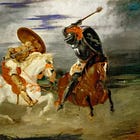



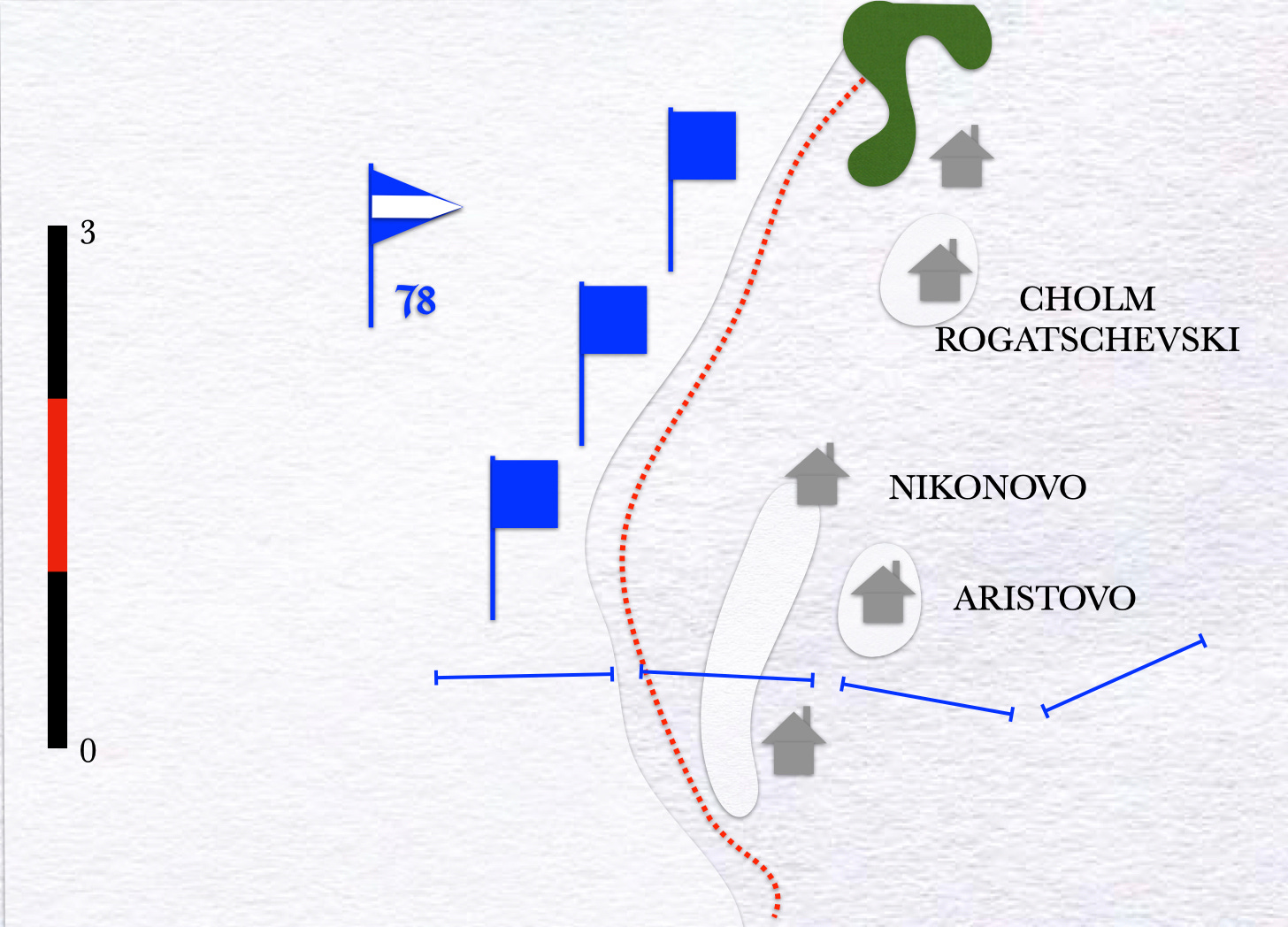

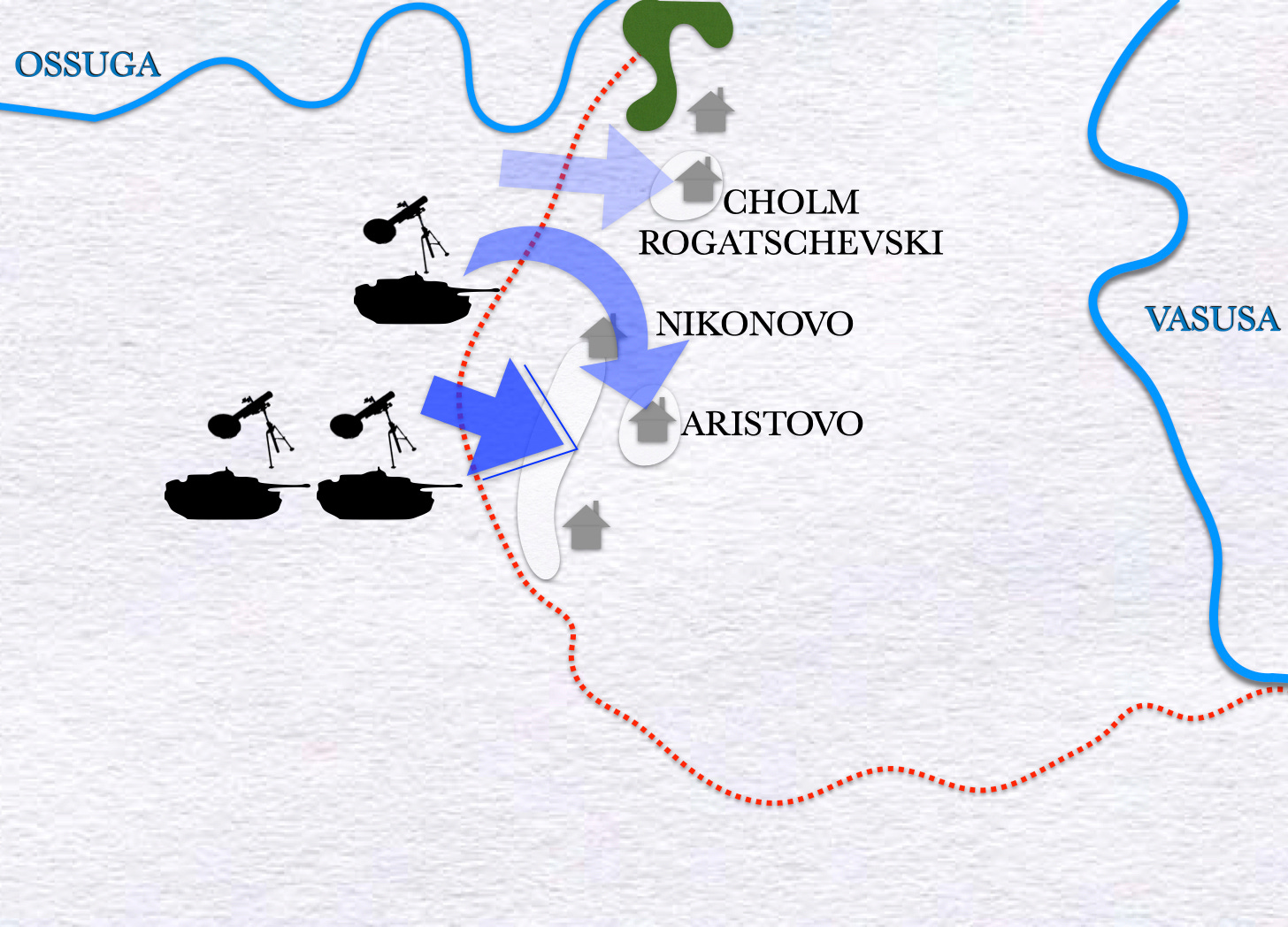
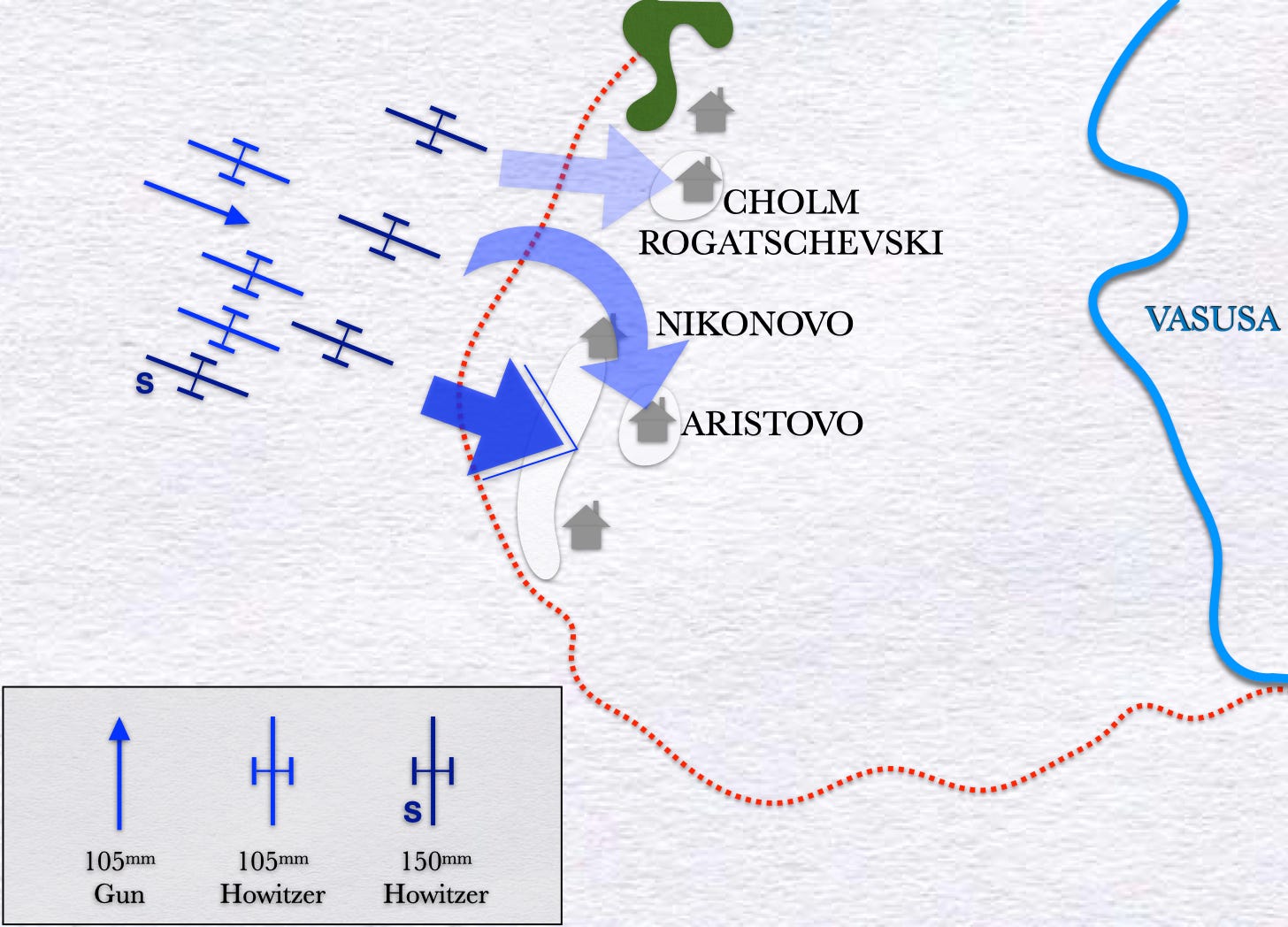
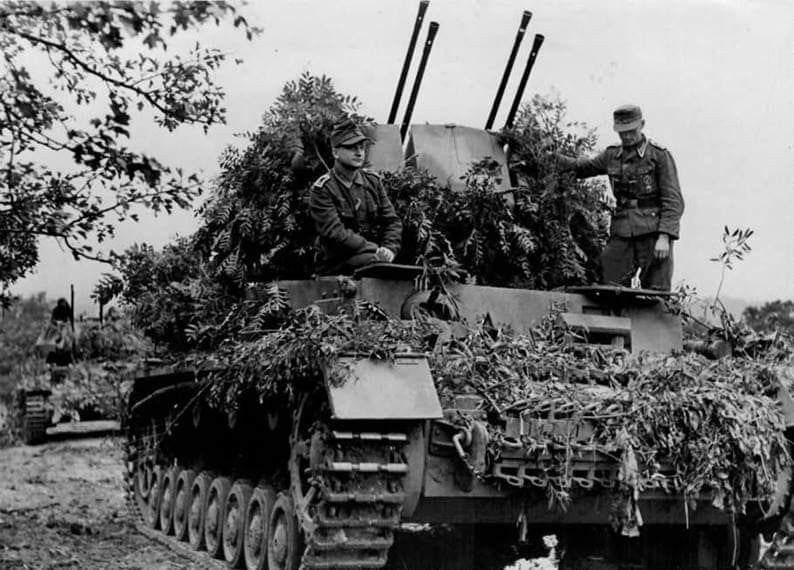
A bicycle recon squadron attached to a motorized division? On the Eastern Front? Madness!
Hi Prof. Gudmundsson,
I was rooting for a point of main effort centered on Cholm, but now I realize that such a solution would leave the left flank of the 216 Inf. Div. hanging in thin air.
Do you think that Major General Völckers took other units from the XXXIX Corps into consideration for choosing the 78th's point of main effort?
Best regards,
JC